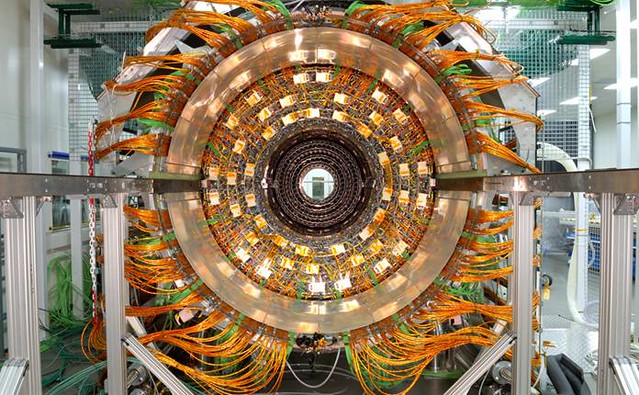Rails style database migrations are a useful way to evolve your data schema in an agile manner. Most Rails projects start like this, and at first, making changes is fast and easy.
That is until your tables grow to millions of records. At this point, the
locking nature of ALTER TABLE may take your site down for an hour or more
while critical tables are migrated. In order to avoid this, developers begin
to design around the problem by introducing join tables or moving the data
into another layer. Development gets less and less agile as tables grow and
grow. To make the problem worse, adding or changing indices to optimize data
access becomes just as difficult.
Side effects may include black holes and universe implosion.
There are few things that can be done at the server or engine level. It is
possible to change default values in an ALTER TABLE without locking the
table. The InnoDB Plugin provides facilities for online index creation, which
is great if you are using this engine, but only solves half the problem.
At SoundCloud we started having migration pains quite a while ago, and after looking around for third party solutions, we decided to create our own. We called it Large Hadron Migrator, and it is a gem for online ActiveRecord and DataMapper migrations.
The Large Hadron collider at CERN
The basic idea is to perform the migration online while the system is live, without locking the table. In contrast to OAK and the facebook tool, we only use a copy table and triggers.
The Large Hadron is a test driven Ruby solution which can easily be dropped
into an ActiveRecord or DataMapper migration. It presumes a single auto
incremented numerical primary key called id as per the Rails convention. Unlike
the twitter solution, it does not require the presence of an indexed
updated_at column.
Lhm currently only works with MySQL databases and requires an established ActiveRecord or DataMapper connection.
It is compatible and continuously tested with Ruby 1.8.7 and Ruby 1.9.x, ActiveRecord 2.3.x and 3.x (mysql and mysql2 adapters), as well as DataMapper 1.2 (dm-mysql-adapter).
Lhm also works with dm-master-slave-adapter, it'll bind to the master before running the migrations.
Install it via gem install lhm or add gem "lhm" to your Gemfile.
You can invoke Lhm directly from a plain ruby file after connecting ActiveRecord to your mysql instance:
require 'lhm'
ActiveRecord::Base.establish_connection(
:adapter => 'mysql',
:host => '127.0.0.1',
:database => 'lhm'
)
# or with DataMapper
Lhm.setup(DataMapper.setup(:default, 'mysql://127.0.0.1/lhm'))
# and migrate
Lhm.change_table :users do |m|
m.add_column :arbitrary, "INT(12)"
m.add_index [:arbitrary_id, :created_at]
m.ddl("alter table %s add column flag tinyint(1)" % m.name)
endTo use Lhm from an ActiveRecord::Migration in a Rails project, add it to your Gemfile, then invoke as follows:
require 'lhm'
class MigrateUsers < ActiveRecord::Migration
def self.up
Lhm.change_table :users do |m|
m.add_column :arbitrary, "INT(12)"
m.add_index [:arbitrary_id, :created_at]
m.ddl("alter table %s add column flag tinyint(1)" % m.name)
end
end
def self.down
Lhm.change_table :users do |m|
m.remove_index [:arbitrary_id, :created_at]
m.remove_column :arbitrary
end
end
endUsing dm-migrations, you'd define all your migrations as follows, and then call
migrate_up! or migrate_down! as normal.
require 'dm-migrations/migration_runner'
require 'lhm'
migration 1, :migrate_users do
up do
Lhm.change_table :users do |m|
m.add_column :arbitrary, "INT(12)"
m.add_index [:arbitrary_id, :created_at]
m.ddl("alter table %s add column flag tinyint(1)" % m.name)
end
end
down do
Lhm.change_table :users do |m|
m.remove_index [:arbitrary_id, :created_at]
m.remove_column :arbitrary
end
end
endNote: Lhm won't delete the old, leftover table. This is on purpose, in order to prevent accidental data loss.
There are two different table rename strategies available: LockedSwitcher and AtomicSwitcher.
For all setups which use replication and a MySQL version affected by the the binlog bug #39675, we recommend the LockedSwitcher strategy to avoid replication issues. This strategy locks the table being migrated and issues two ALTER TABLE statements. The AtomicSwitcher uses a single atomic RENAME TABLE query and should be favored in setups which do not suffer from the mentioned replication bug.
Lhm chooses the strategy automatically based on the used MySQL server version, but you can override the behavior with an option:
Lhm.change_table :users, :atomic_switch => true do |m|
# ...
endWe'll check out your contribution if you:
- Provide a comprehensive suite of tests for your fork.
- Have a clear and documented rationale for your changes.
- Package these up in a pull request.
We'll do our best to help you out with any contribution issues you may have.
The license is included as LICENSE in this directory.

